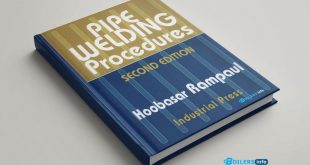Welding Complete Techniques and Project Plans: A Comprehensive Guide for Welding Experts
Welding is not just a trade—it’s a craft that demands precision, planning, and experience. Whether working on structural steel, pressure vessels, pipelines, or artistic metalwork, the techniques and project planning behind successful welds define the quality and durability of the finished product. This article offers a deep dive into the advanced welding techniques and project planning essentials every welding expert should master.

🔧 Advanced Welding Techniques for Precision and Strength
1. Multi-Pass Welding with Interpass Control
In projects requiring thick sections, such as boiler fabrication or pressure vessels, multi-pass welding ensures deep penetration and strength. Controlling interpass temperature is critical to avoid weld defects such as hydrogen-induced cracking.
Pro Tip: Use temperature crayons or infrared thermometers to monitor interpass temperature, especially when working with high-strength low-alloy steels.
2. Back-Gouging and Back-Welding
For full-penetration welds, especially in pipelines and pressure components, back-gouging (mechanical or air carbon arc) ensures removal of slag and incomplete fusion on the root side. A clean back-weld improves structural integrity.
3. Welding Position Mastery (1G–6G)
Mastery of all welding positions is essential for field applications. Projects like offshore rigs or overhead tanks often require out-of-position welding (e.g., 5G or 6G), where gravity affects weld pool control.
Recommendation: Regular practice using 6G mock-ups helps prepare for ASME or CSWIP certification.
4. Preheat and Post-Weld Heat Treatment (PWHT)
Controlling thermal input is essential for critical welds, especially in chrome-moly or stainless steels. Preheating reduces thermal shock, while PWHT relieves residual stresses and restores material properties.
📐 Project Planning Essentials in Welding
1. WPS and PQR Development
Welding Procedure Specifications (WPS) and Procedure Qualification Records (PQR) are the backbone of any certified welding operation. A well-documented WPS improves consistency and compliance with ASME, AWS, or ISO standards.
Checklist:
- Define base metal and filler metal compatibility.
- Specify joint design and welding position.
- Include preheat, interpass, and PWHT requirements.
2. Material Selection and Traceability
Projects involving critical service (e.g., sour gas, cryogenic) must maintain strict control over material traceability. Using MTCs and stamping heat numbers is essential during inspection and code compliance audits.
3. Weld Map Creation
Creating weld maps before fabrication ensures a structured approach to welding. It identifies weld joints, welding sequences, and NDT requirements.
Tool: Use CAD or project management software integrated with welding QC systems.
4. Quality Control and NDT Integration
Non-destructive testing methods—like RT, UT, MPI, or PT—must be planned early. Coordinate with QC teams to align inspection timelines with welding stages to avoid delays.
🔩 Sample Project Plan: Pipe Welding in a Thermal Power Plant
Objective: Fabricate and weld 16” Schedule 80 P91 pipe for a high-pressure steam line.
| Step | Description |
|---|---|
| 1 | Material inspection and MTC review |
| 2 | Joint edge preparation with beveling |
| 3 | Preheat to 200°C |
| 4 | Root pass with GTAW (ER90S-B9 filler) |
| 5 | Hot pass and fill with SMAW (E9018-B9) |
| 6 | Interpass control ≤ 300°C |
| 7 | PWHT at 760°C for 2 hours |
| 8 | UT and MPI on completed welds |
| 9 | Documentation and weld map update |
🛠️ Final Thoughts & 📖⬇️
For welding experts, achieving excellence goes beyond striking an arc. It’s about understanding metallurgy, following procedures, coordinating with QA/QC, and planning every detail with foresight. Whether you’re managing a refinery shutdown, fabricating a pressure vessel, or constructing a high-rise frame, the combination of refined techniques and smart project planning is your blueprint for success.
Stay sharp. Weld strong. Plan smarter.
 Boilersinfo Boiler and Mechanical Power Digital Library
Boilersinfo Boiler and Mechanical Power Digital Library





